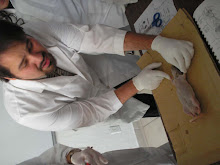Mollusca..!
All molusks have like a soft-body that is like jelly-like meat. They have a shell in a specific part of their body.
-There are 7 groups, we're talking about 3 right now...
Gastropods...
In gastropods we can find animals like the snails. They have one single "foot" that they use to move. Regularly, gastropods are herbivores. They have a "radula" that is like a small tongue used to "scrape" rocks to get herbs and get feed.
Bivalva
Bivalva are the animals that have two shells, like clams. They have a muscle that gets both shells, and it can either
close it or open. They have a foot, that is what we see when we open them. Then use it to move or flee from danger.
They have a special "tissue" that they use as a net, or a filter, in which food gets stuck in there, so the bivalve eats.
Shelder and Clampearl can throw water through their foot. I dont know how can they do it, but is SUPER effective versus
the fire types and not -very effecive versus ICE types... ;B
Cephalopoda
These ones have an inner shell. They have their skin, and under the skin they have their shell. For example, the nautilus, the squid. -The squid has its shell in its "forehead" they, under the forehea they have its foot, and then, they have tentacles, used to swim or grab stuff..
The nautilus is seen as the one of the "most" dangerous hunters of the animals, because inside its shell, it has chambers, in which they contain air, and the nautilus can control the pressure inside them, so they can either go up, and down, and they are good preparing traps for preys.
Arthropods
This "phyllum" is the most nomerous in all the eukarya domain.
-We find that they share many characteristics.
*Exoskeleton
*Segmented
*jointed appendages "legs"
SPIDERS AND FRIENDS...
They are called "chelicerates"
-This because the shape of their mouths.
They have 4 pairs of legs and they divide into 2 segments.
Many examples of these ones are spiders, mites, scorpions, Horseshoe crabs
I like the wolf spider
Crustaceans and bff's
they are called decapoda
-They have a carapace, that this is that in a specific part of its "exoskeleton" they have a VERY thick part, like in
lobsters, crabs, etc.
They have a head, 2 antenae and 3 segments, "head, cephalotorax, thorax"
INSECTS AND FELLAS..
these animals hano no branched appendages.
They have jaws and 2 antenae.
*the centipede
*milipede
*Insects..
One of the processes of them is the "molting" is like their "skins"gets too old, and inside of them, they create a new "insect" so when it is time, they can come "out" of their old skin and be the same-other insect..
cool :D
